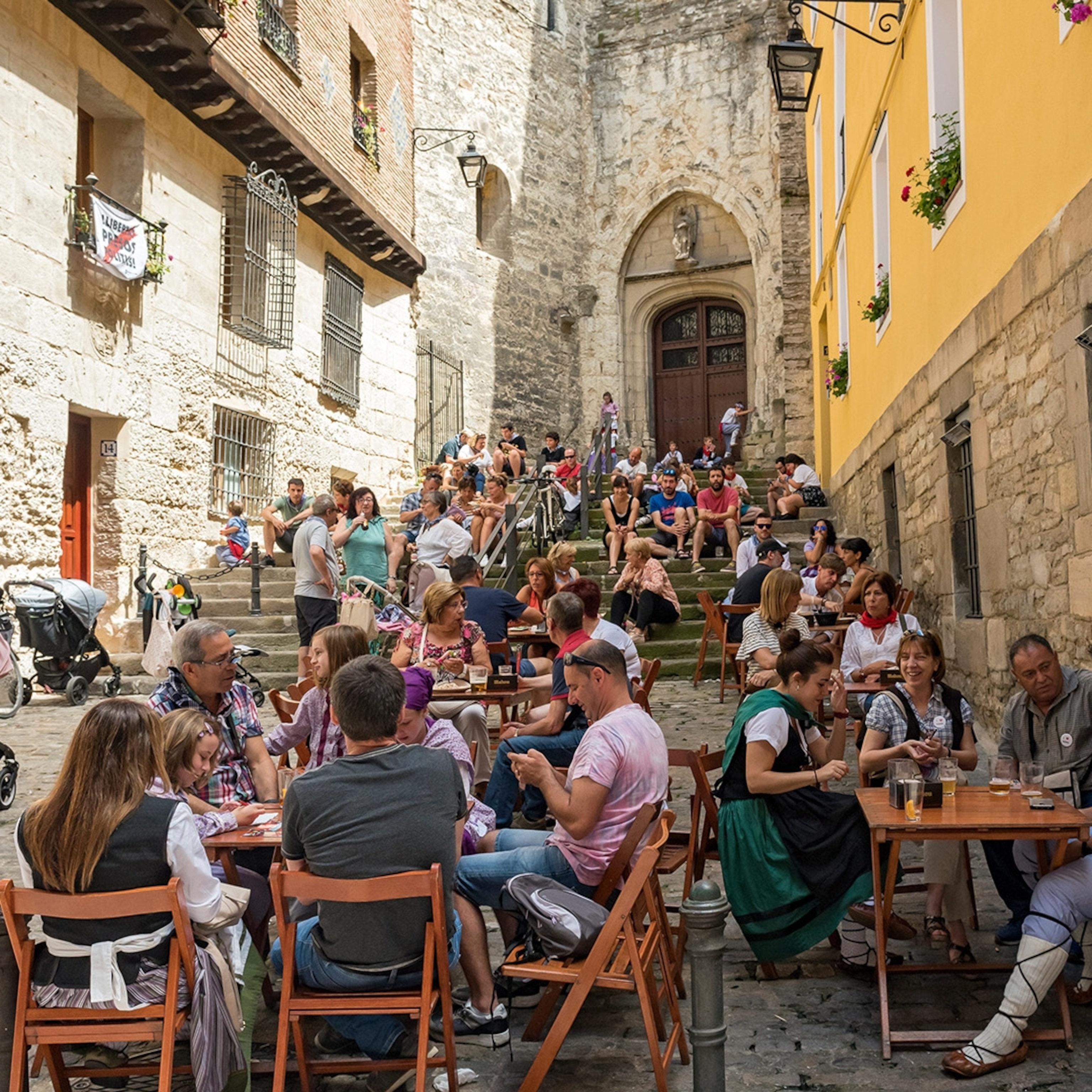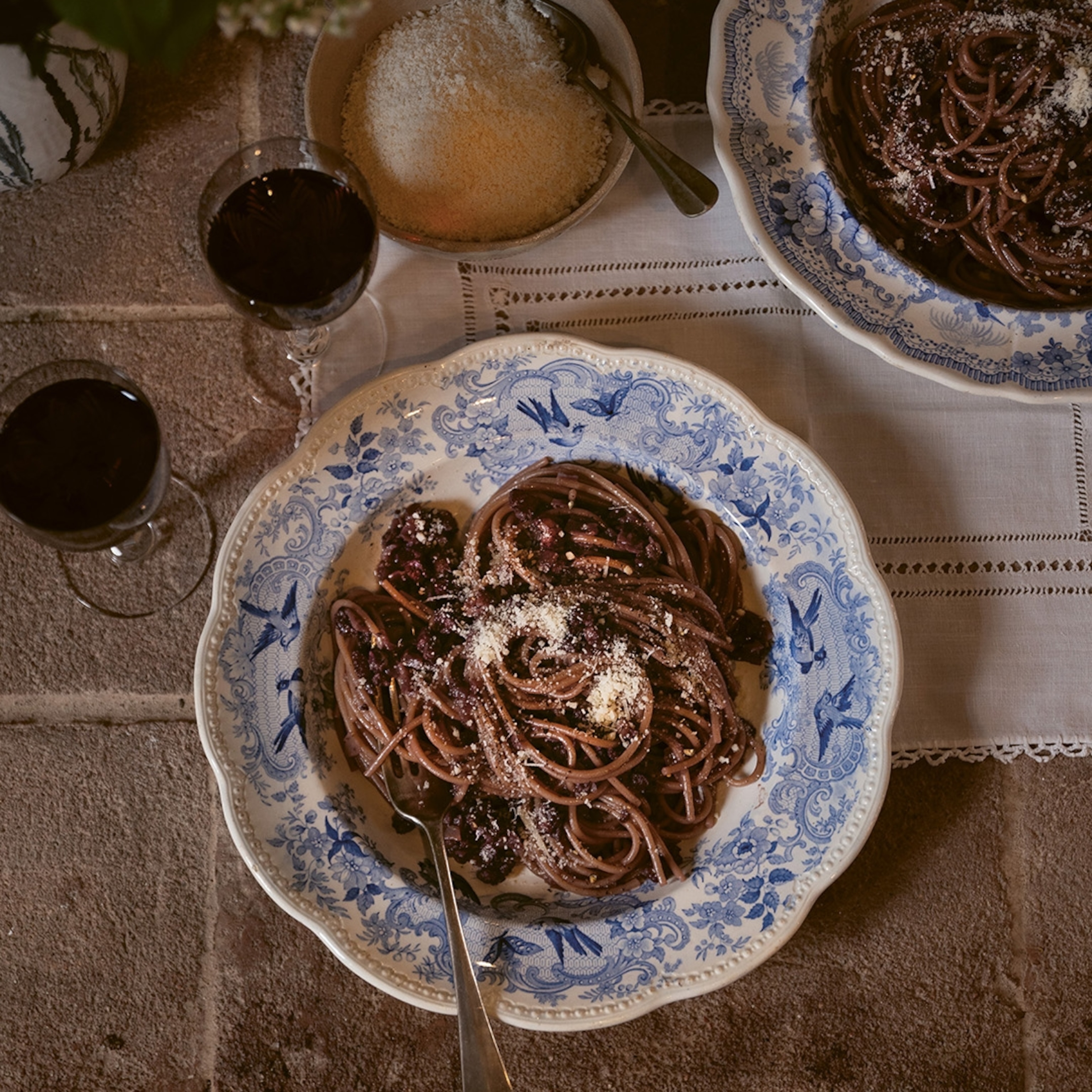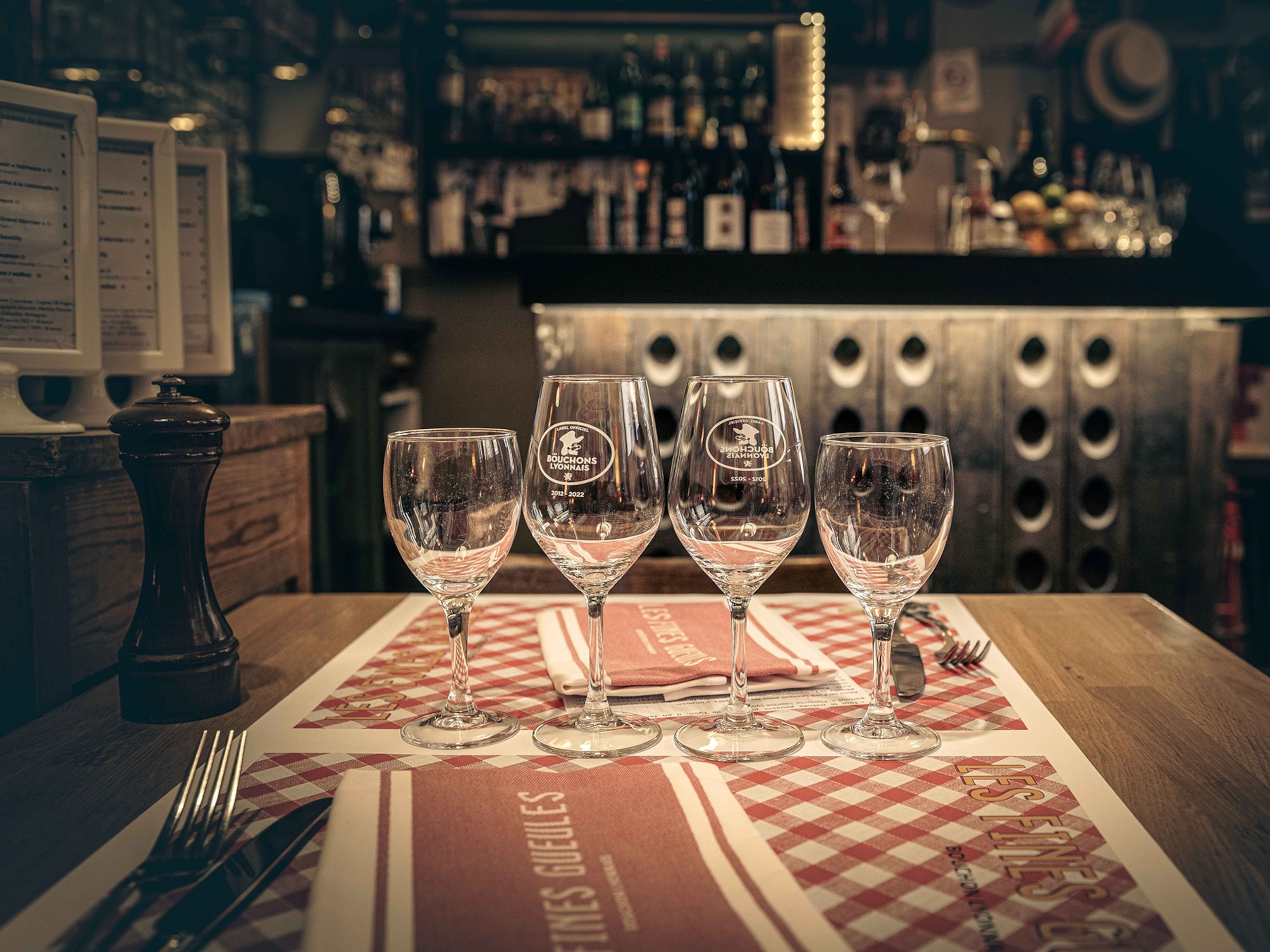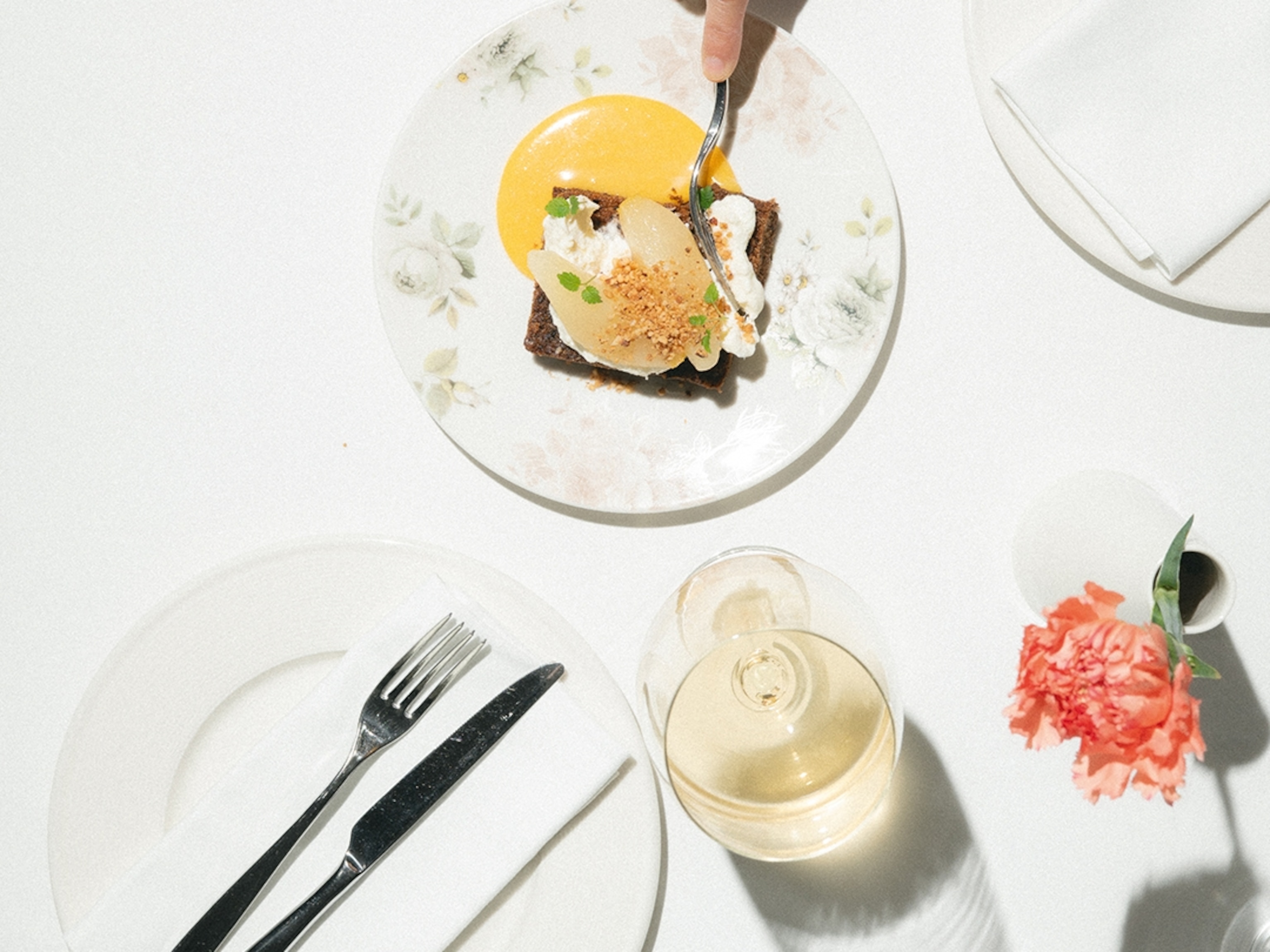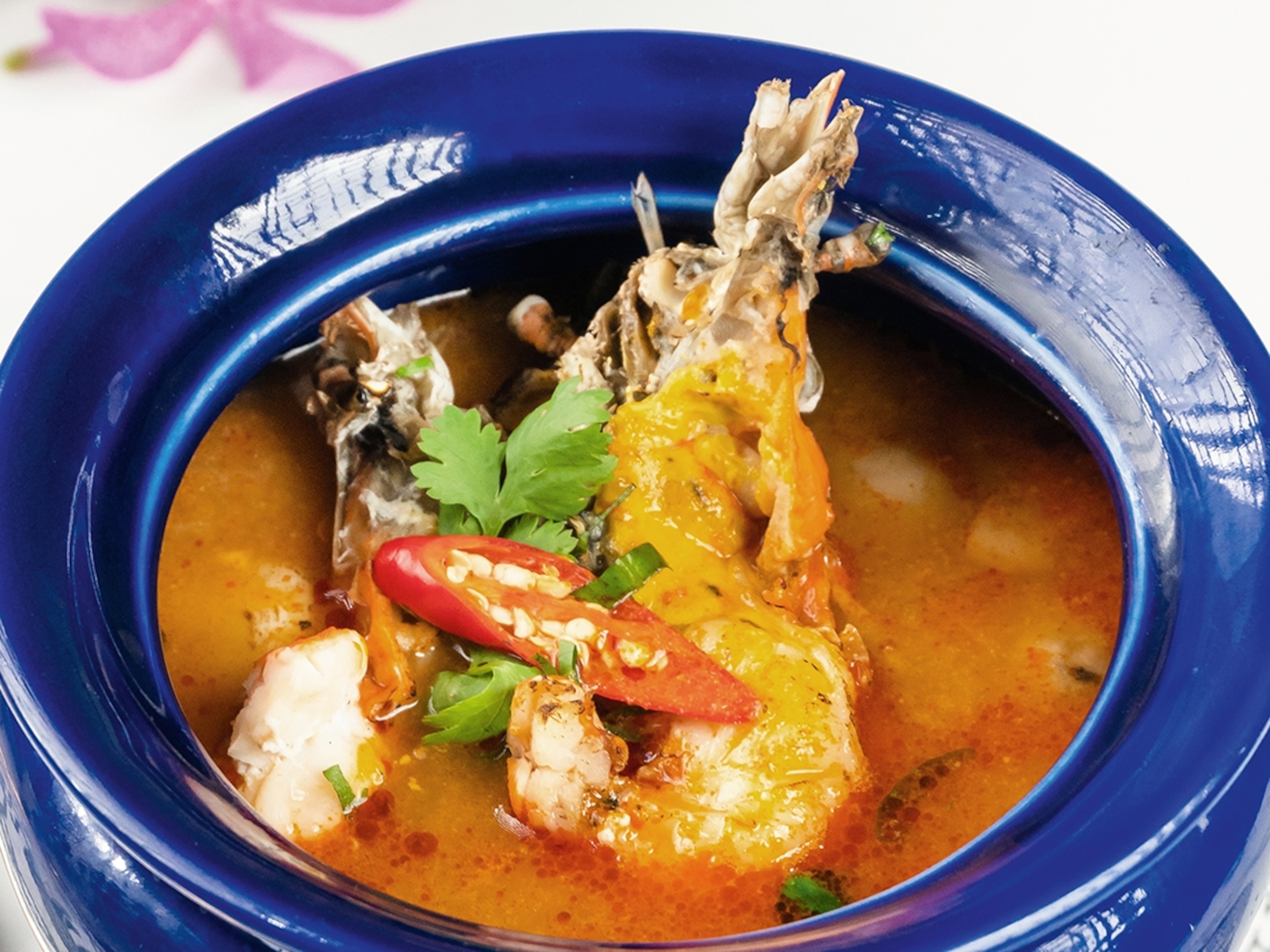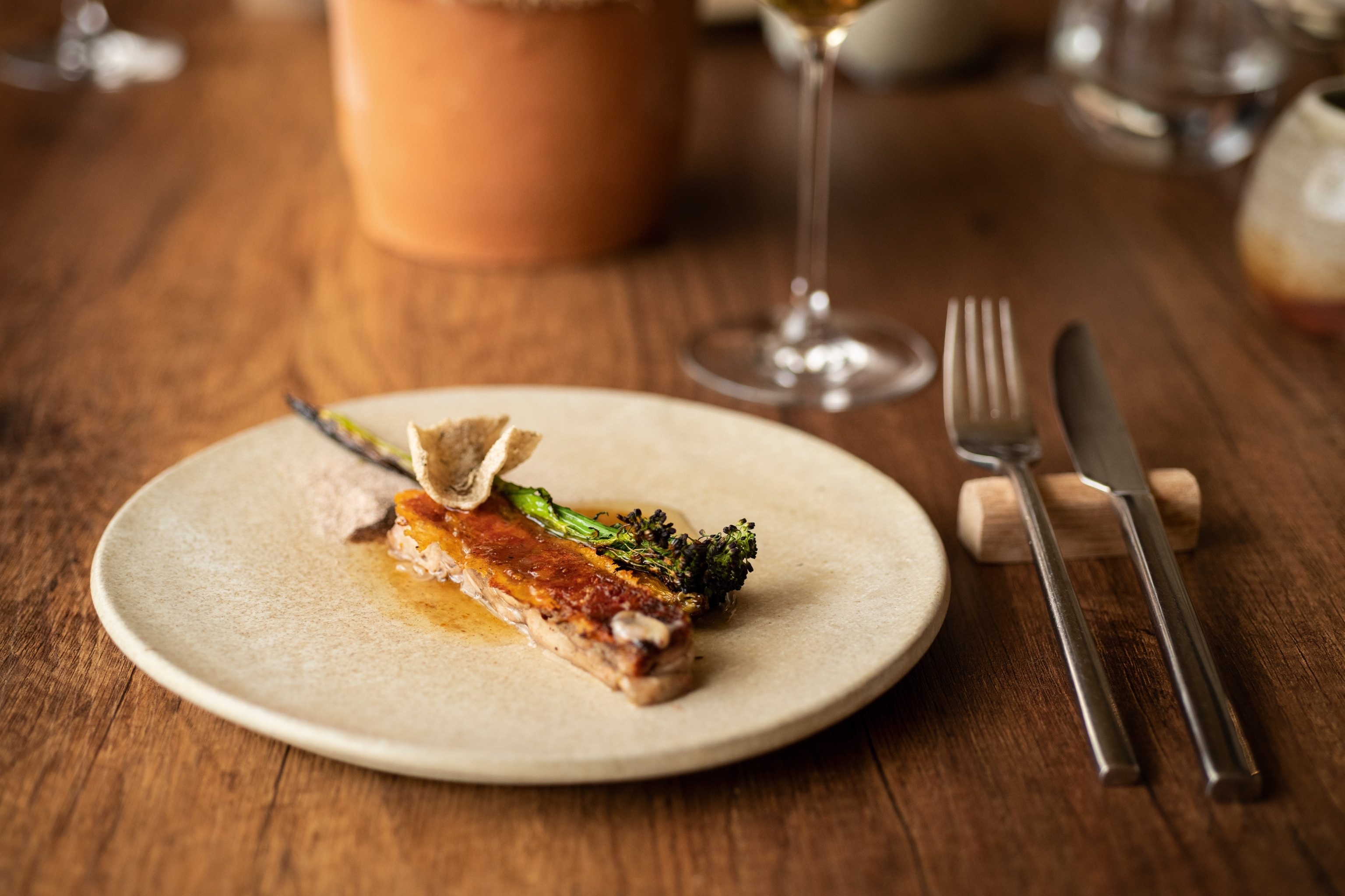
The pioneer: chef Juan Sebastián Pérez on championing Ecuadorian ingredients
At his restaurant in Quito, the chef puts a fine-dining spin on traditional ingredients, placing as much emphasis on the sourcing process as the cooking method.
Juan Sebastián Pérez’s signature dish is a sliver of meat sliced at right angles, coated with a gelatinous gleam and topped with broccolini and a diaphanous amaranth cookie. It dissolves in the mouth like slow-cooked duck, while its translucent skin shatters like pork crackling; even the most worldly diner is unlikely to guess this is, in fact, guinea pig. It’s a world away from the skewered and butterflied cuy (the Spanish word for guinea pig) on Quito’s streets, a dish that’s often described as dry and tough, even by its biggest fans. But at Quitu, his restaurant in the capital, Pérez has created a true high-end experience — and has done it all using local ingredients sourced personally by him.
Born in Quito into a family of hospitality professionals, Pérez says the passion for cooking runs in his DNA. As a teenager, he took odd jobs flipping burgers before travelling to Mexico City to study at Le Cordon Bleu, the top-of-the-range international network of haute cuisine schools, where he was introduced to fine-dining techniques. Four years later, back at home, he founded Urko, a restaurant that would grow into a Quito institution. “We used local ingredients, but there was no real identity,” says Pérez.
Quitu is the distilled form of what Pérez started with Urko, which he’s now left. In 2014, while looking for inspiration, he came across a newspaper report on a pampamesa harvest celebration in the rural area of Tarqui. He took an 11-hour overnight bus to be there the next day. “I saw all these fresh ingredients, which locals cooked directly on fire — there was no comparison,” he says.
From that point on, he became obsessed with origin. For him, it’s not enough to speak to vendors at the market; he pursues ingredients to their source, cultivating relationships with farmers and helping them realise the value in what they grow. “The producers are the ones with the knowledge — that’s what inspires me,” Pérez says. “I eat these ingredients with them, and in turn, they come here and try my recipes. They feel very proud of their work — it’s emotional.”
Pérez opened Quitu in 2015 with 10 seats. It’s moved and grown; the current 20-seat restaurant in the capital’s trendy La Floresta neighbourhood is its fourth location. Designed by the studio of Barbara Bermejo, Pérez’s wife, the space has dark-wood ceilings styled after a 1950s Quito home, with pre-Incan ceramics that belonged to Pérez’s mother.
The kitchen is a more experimental affair, where high-tech gadgets from Pérez’s Cordon Bleu days alternate with ancestral techniques learned by sharing food with families in the countryside. “We cure fish by wrapping it in leaves, so we can make the umami explode,” he says. “We use the charcoal grill, but we also do sous vide. We see it as a food think-tank.”
An Andean staple, guinea pig presented a unique challenge: its meat is rich in collagen, which is lost through the traditional high-heat recipes of deep frying or fire roasting. At Quitu, it’s cooked for 72 hours at low temperatures, then roasted. “The idea is to understand what you’re preparing,” he says. “This is how tradition meets haute cuisine.”
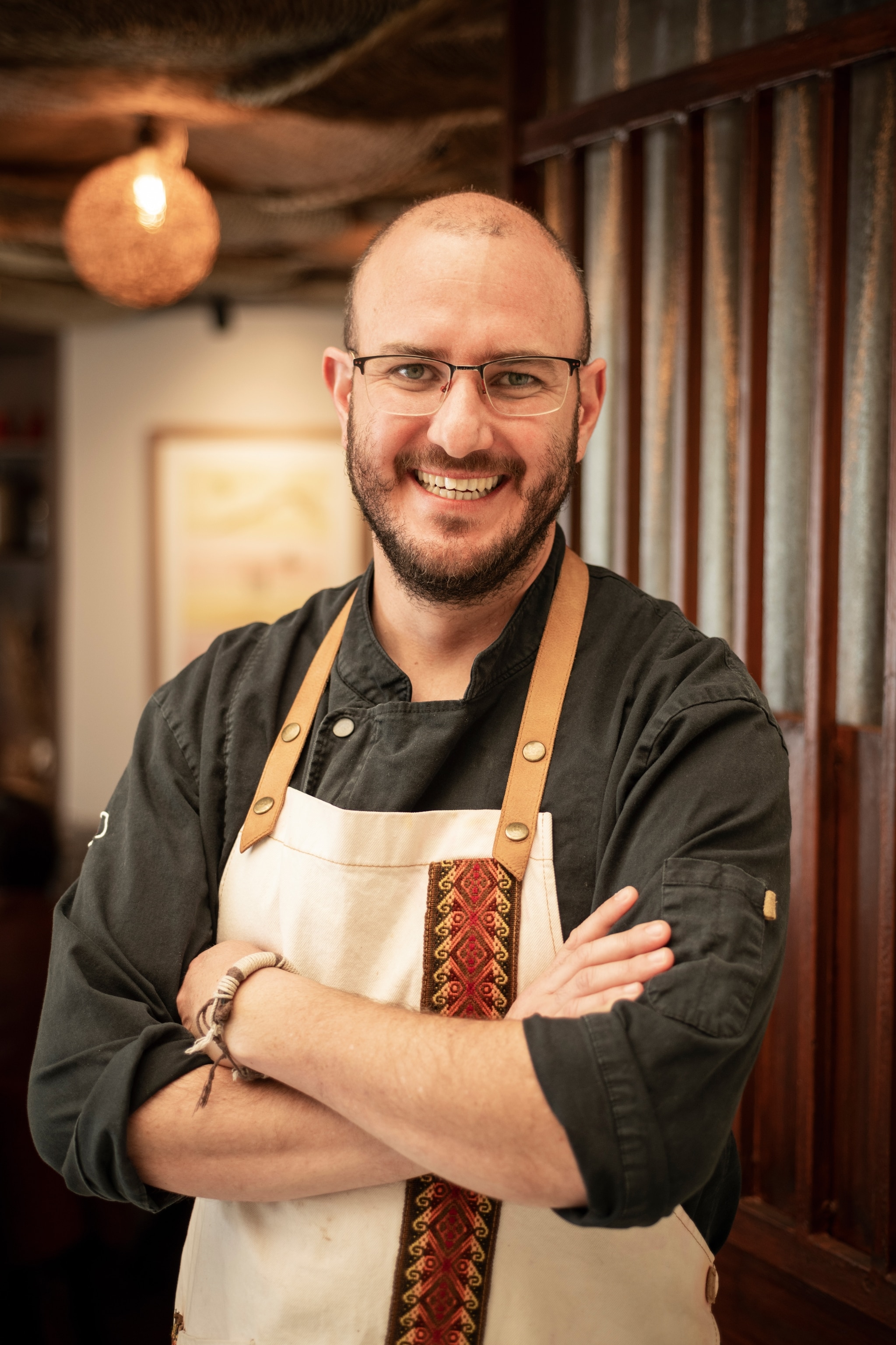
A question of provenance
Of course, Pérez knows exactly where the guinea pigs come from — he even knows what they eat. They’re part of a community-based project that sells young guinea pigs to Indigenous women, teaches them how to raise the animals, then buys them back as adults. Pérez has arranged for the guinea pigs to be fed medicinal herbs such as lavender leaves and Andean mint, working with a Quito-based company that sources herbal teas from Indigenous producers. And when it’s time, the animals are killed using an ancestral technique that minimises both suffering and toxin release. To Pérez, Quitu’s cuy represents the coming together of those three elements. “It’s become our signature dish for two reasons,” he says. “The pride we feel when we serve it, and the creativity that goes into it.”
The menu at the restaurant changes daily, with a bigger, structural change occurring every month, but certain ingredients crop up regularly. One of these is a purple Andean potato called tushpa and nicknamed puca shungo (red heart). Pérez discovered it at a pambamesa event, which led him to the single family in the area that was growing it commercially and selling it to the community; the popularity of disease-resistant monocrops had led this fragrant tuber to near-extinction. Pérez asked them to send him a sack of potatoes, on which he started to experiment. “Some of them had already sprouted, which means the starch had become sugar, so they had a deeper flavour,” he says. “I started to cook them and, little by little, understand them.” Today, puca shungo is served at Quitu three ways on one plate — queso fresco cheese-stuffed spheres, 40-day-fermented tortilla cubes and 72-hour lactofermented cylinders. “Now, the family I work with have two acres of land,” Pérez continues. “They’re not only selling to me, they’re selling to the industry.”
However, it’s perhaps ceviche — a dish just as Ecuadorian as it is Peruvian — that best typifies Pérez’s approach. Quitu’s version features Galápagos grouper, and instead of peanuts, it’s topped with seeds of Amazonian macambo, a close cousin of cacao with all the creaminess of white chocolate but none of the cloying sweetness.
Although common around the Galápagos Islands, the grouper’s limited range makes it vulnerable to overfishing. To minimise impact, it’s fished one by one, and even a single spoiled fish is a significant waste. In 2013, Pérez spent two weeks living in the village of Puerto Lopez with a family of fishermen, observing how they worked — a knowledge he then applied to source the grouper. To streamline the process, he collaborated with ShellCatch Ecuador, which develops apps that connect restaurants directly with fishermen. “That came four hours ago,” he says, pointing to a chopped fillet in the process of being plated. “All the fishermen we work with have GPS, so we can see on our phones where they are. As soon as they catch something, I click ‘order’.”
Eventually, Pérez plans to relocate Quitu to farmland just outside Quito, so the restaurant can grow some of its own ingredients. “I see the city as a culinary destination,” he says. “We need to work a lot, to improve. We need to be responsible for our sourcing, encourage producers to become more responsible and show travellers all the delicious food we have in the country — all in one place.”
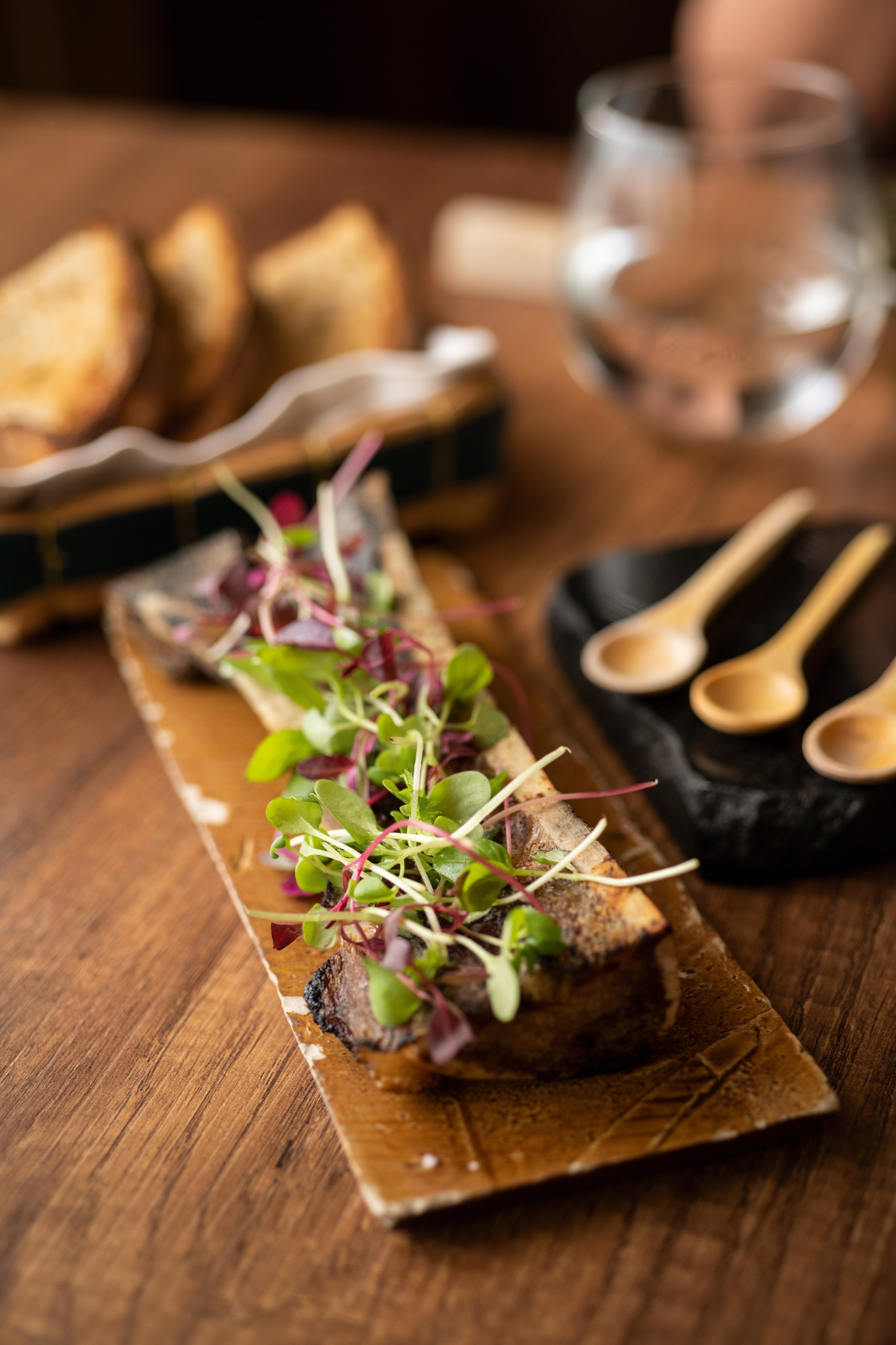
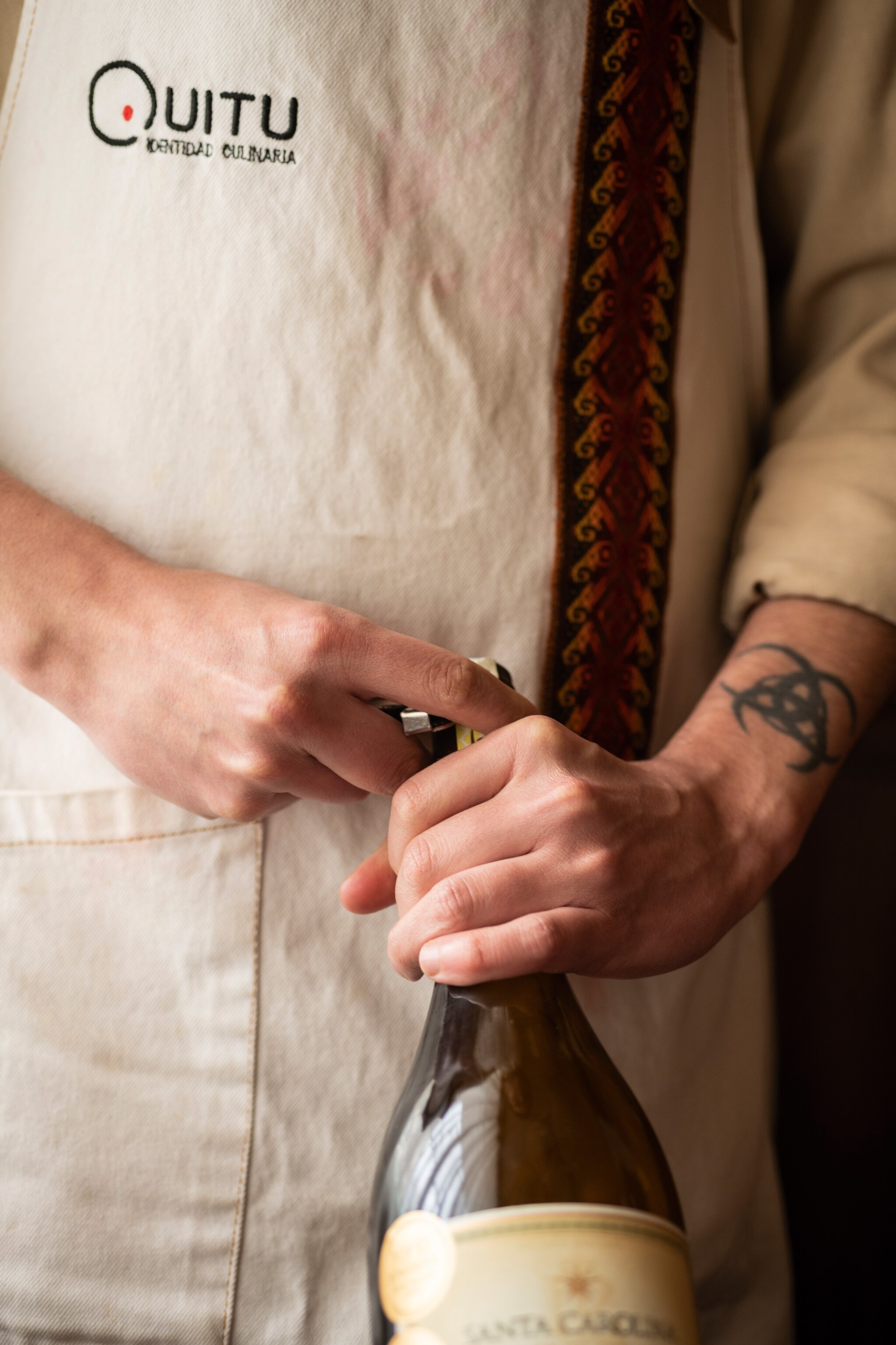
Five more signature ingredients
1. Amaranth
Similar to quinoa, this pseudo-grain features in colada moradas, ceremonial drinks consumed during the Andean Day of the Dead. It was at the brink of extinction in Ecuador, where the Spanish banned production in the 16th century, fearing its spiritual connotations would inhibit the adoption of Catholicism.
2. Mashua
Rich in vitamin C and carotene, this peppery orange tuber is used as a natural medicine in Andean communities. It had fallen out of favour with younger generations, but more recently, it’s found a new audience among the health conscious.
3. Speciality coffee beans
The coffee served at Quitu comes from the Finca Soledad farm in the Intag Valley, in Imbabura province. Owner José Pepe Jijón plants his coffee seeds in the wild, without disrupting the ecosystem. The flavour profile of each batch is developed by roasting and fermenting according to harvest conditions.
4. Amazonian vanilla beans
Quitu’s vanilla grows on small plantations run by Indigenous families in the Ecuadorian Amazon. It’s distinct from Madagascan vanilla in its fruity, floral notes, as well as hints of cinnamon, molasses and cacao.
5. Fien-aroma cacao
Fien-flavour cacao varieties are relatively rare, making up only 10% of global cacao production. The cacao used and served at Quitu comes from a 200-tree plantation in the Intag Valley; it’s mixed with mineral water from the Cotopaxi volcano and injected with air to lighten the texture.
For more information, visit ecuador.travel
Facebook | Instagram | Twitter
